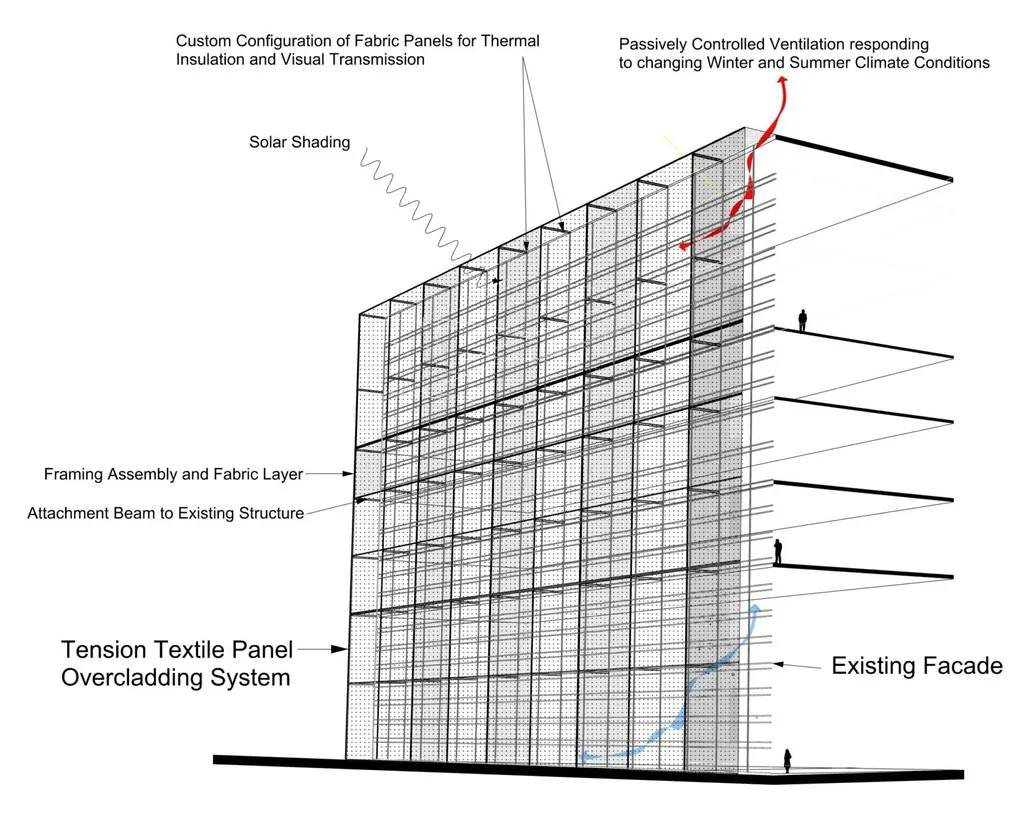In the quest for energy efficiency and sustainability in the built environment, a groundbreaking study published in *Techne* (which translates to “Art” or “Craft” in English) is challenging conventional wisdom. Giulia Procaccini, a researcher at the Department of Architecture, Building Engineering and Built Environment at the Politecnico di Milano, has been exploring the potential of textile membranes in façade retrofits. Her work, part of a broader PhD research, is opening new avenues for the construction industry, particularly in the context of Europe’s urgent need to renovate its aging building stock.
Procaccini’s research focuses on Textile Façade Retrofit Strategies (TFRS) as a sustainable alternative to traditional façade retrofits. The study compares the environmental and energy impacts of these innovative solutions, highlighting their potential to significantly reduce the carbon footprint associated with building renovations. “The use of lightweight textile materials in façade retrofits aligns with the goals of decarbonisation,” Procaccini explains. “It’s a promising strategy to increase the renovation rate while enhancing the resilience and adaptability of urban façades.”
The construction industry is increasingly under pressure to deliver energy-efficient solutions that can meet the demands of a rapidly changing climate. Traditional façade retrofits often involve heavy materials and complex processes, which can be both environmentally and economically costly. Procaccini’s research suggests that textile membranes could offer a more sustainable and cost-effective alternative.
One of the key advantages of TFRS is their lightweight nature. This reduces the structural load on buildings, simplifying the retrofit process and lowering costs. Additionally, textile membranes can be designed to enhance natural ventilation and daylighting, further improving energy efficiency. “These materials are not only lightweight but also highly adaptable,” Procaccini notes. “They can be tailored to meet specific environmental and aesthetic requirements, making them a versatile solution for a wide range of buildings.”
The potential commercial impacts for the energy sector are substantial. As buildings account for a significant portion of global energy consumption, innovative retrofit strategies like TFRS could play a crucial role in reducing energy demand. This, in turn, could lead to lower energy bills for consumers and a reduced strain on energy infrastructure.
Moreover, the use of textile membranes in façade retrofits could stimulate growth in the manufacturing and installation of these materials. As the technology becomes more widespread, economies of scale could drive down costs, making it an even more attractive option for developers and building owners.
Procaccini’s research, published in *Techne*, is part of a growing body of work exploring the potential of innovative materials and strategies in the construction industry. As the sector continues to evolve, the insights gained from this study could shape future developments, paving the way for a more sustainable and energy-efficient built environment.
In the words of Procaccini, “The future of façade retrofits lies in innovation. By embracing new materials and strategies, we can create buildings that are not only energy-efficient but also resilient and adaptable to the challenges of the 21st century.” Her work serves as a testament to the power of research and innovation in driving the ecological transition and enhancing the resilience of our urban landscapes.

